Abstract
The effect of cholestyramine administration on the enterohepatic circulation of bile acids was studied in eight normal volunteers. In six subjects the metabolism of sodium taurocholate-14C was determined after its intravenous injection before and during the 6th wk of cholestyramine administration, 16 g/day. In two subjects, the metabolism of cholic acid-14C was observed before and during the 2nd wk of cholestyramine, 16 g/day. Bile acid sequestration resulted in a more rapid disappearance of the injected primary bile acid and its metabolic products. The composition of fasting bile acids was promptly altered by cholestyramine to predominantly glycine-conjugated trihydroxy bile acid. In four subjects, unconjugated bile acid-14C was administered during cholestyramine administration; the relative proportion of glycine-conjugated bile acid-14C before enterohepatic circulation was similar to the relative proportion of unlabeled glycine-conjugated bile acid present in duodenal contents after an overnight fast, indicating that a hepatic mechanism was responsible for the elevated ratios of glycine- to taurine-conjugated bile acid (G: T ratios) observed. The relative proportions of both dihydroxy bile acids, chenodeoxycholic and deoxycholic, were significantly reduced. Steatorrhea did not occur, and the total bile acid pool size determined after an overnight fast was unaltered by cholestyramine. These findings suggest that in normal man bile acid sequestered from the enterohepatic circulation by cholestyramine is replaced by an increase in hepatic synthesis primarily via the pathway leading to production of glycocholic acid.
Full text
PDF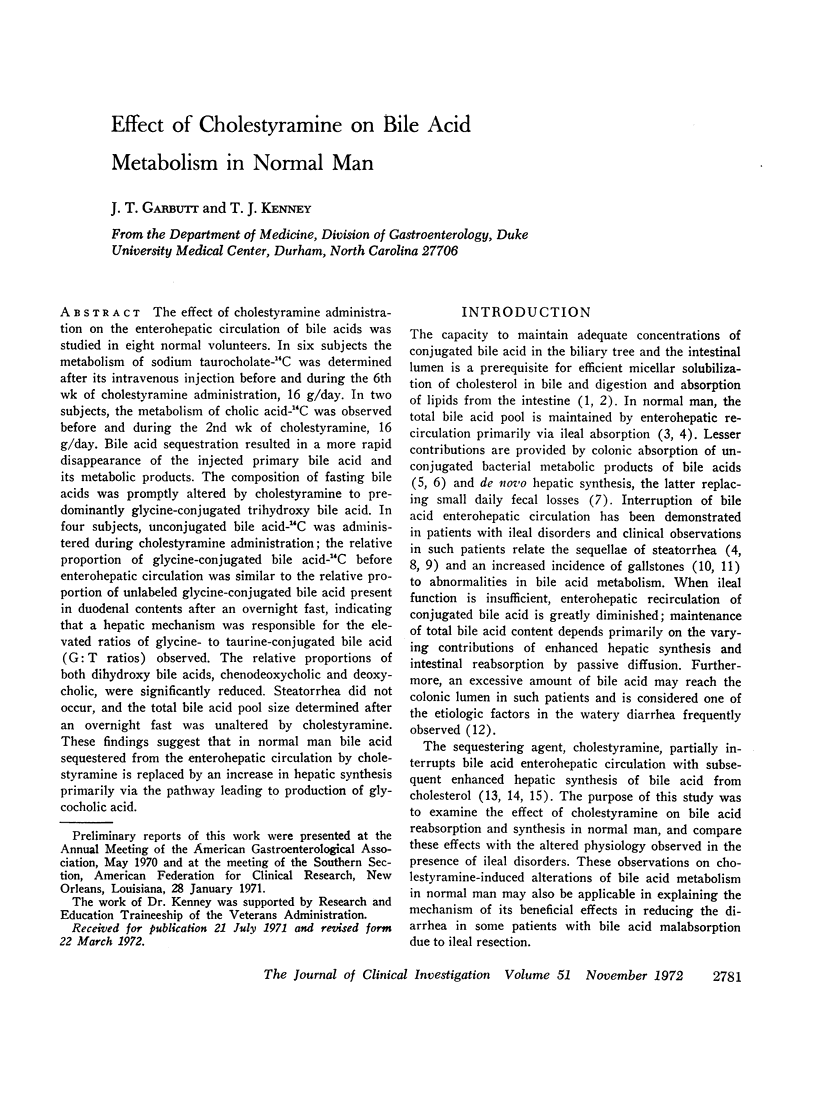
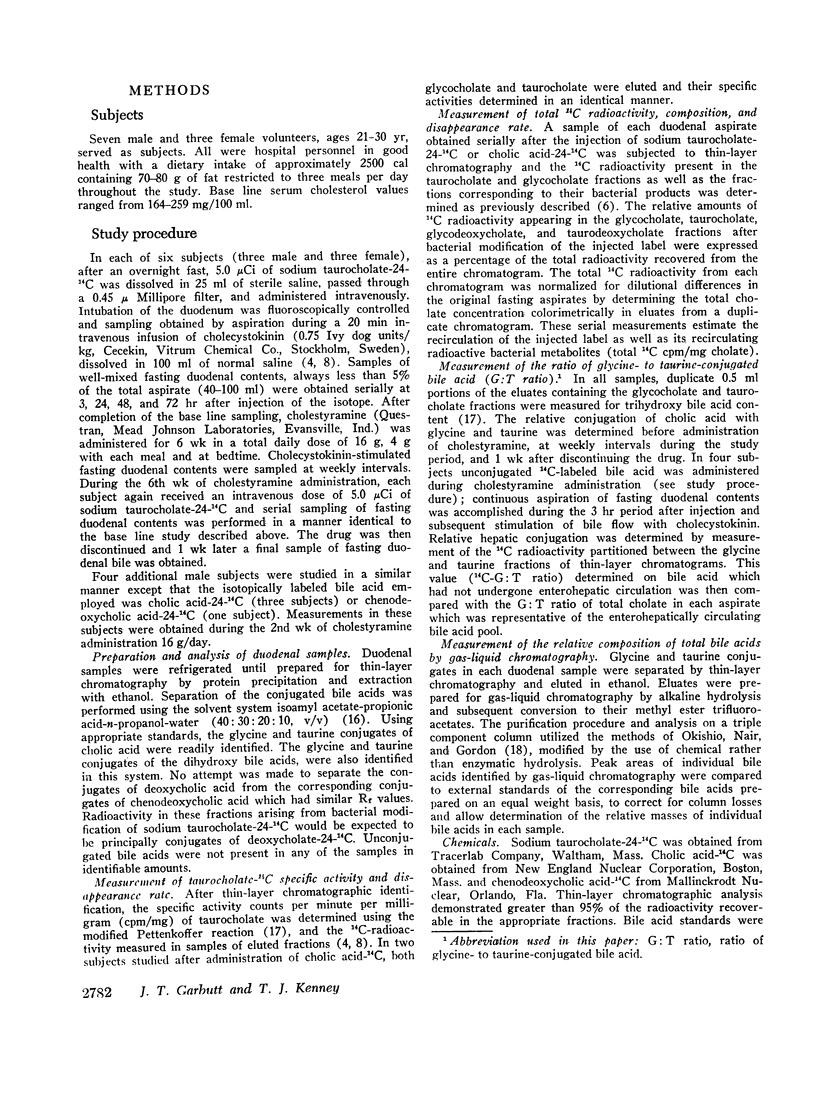
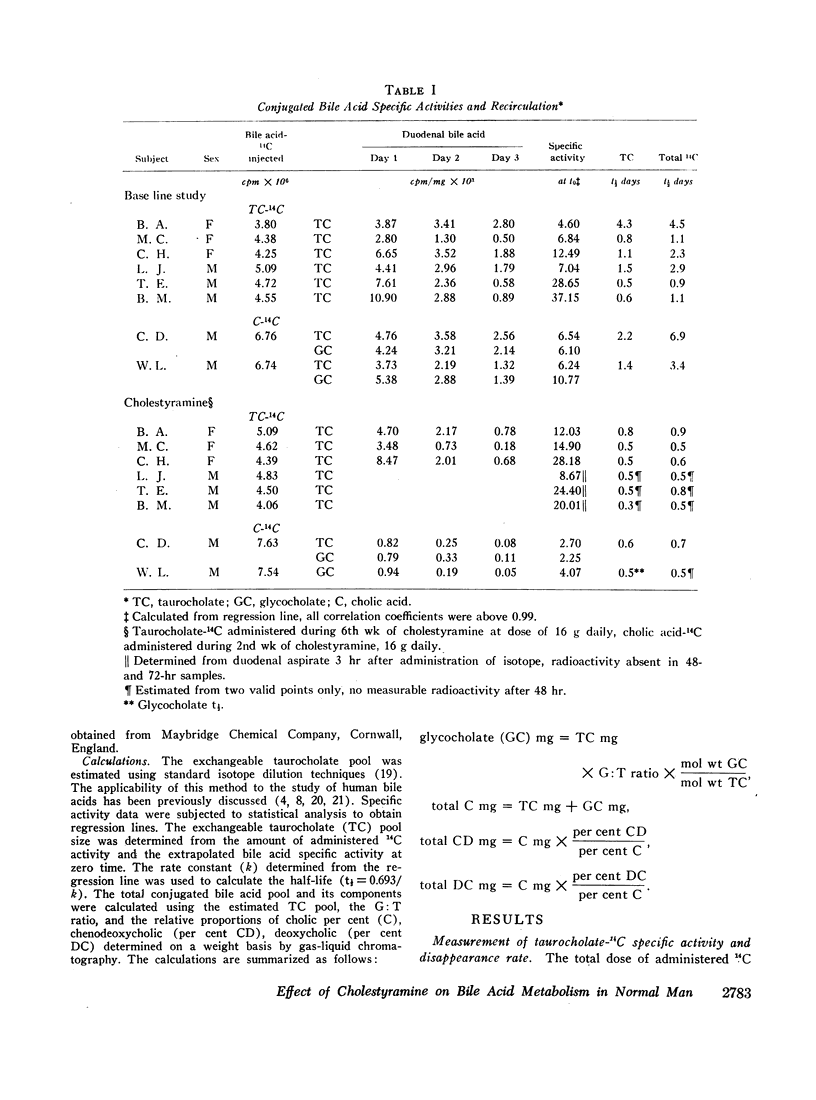
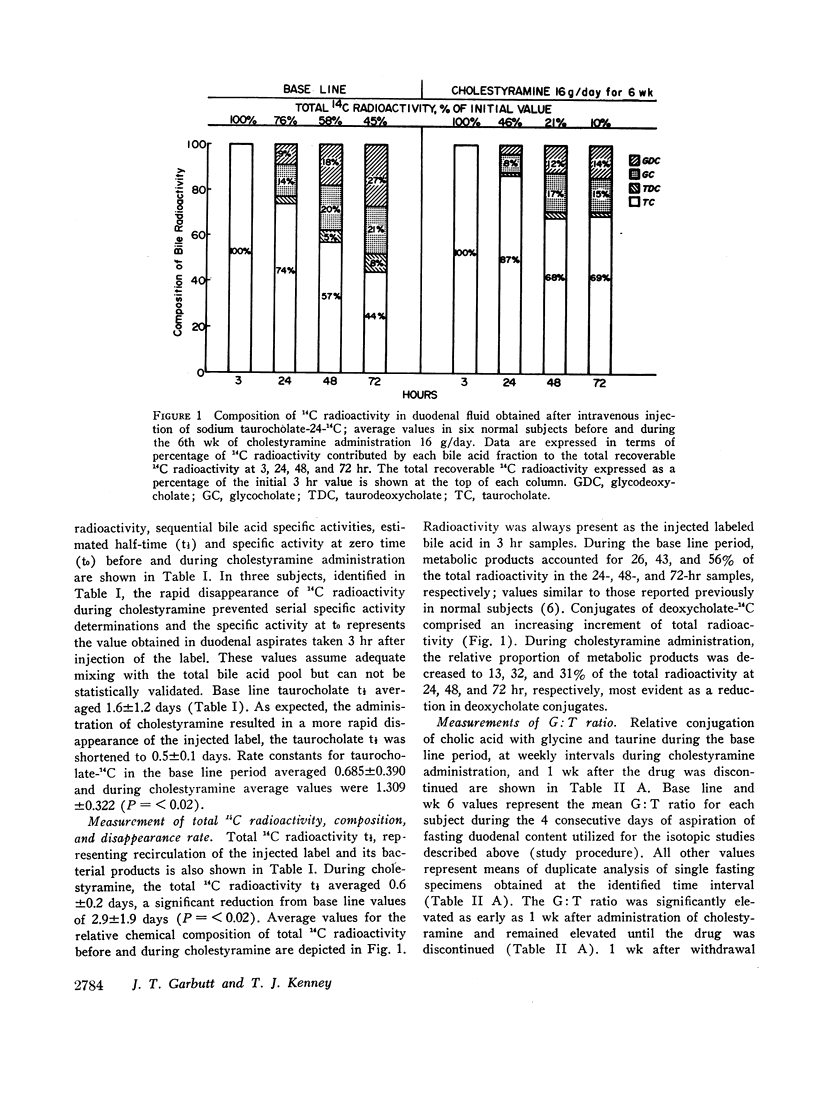
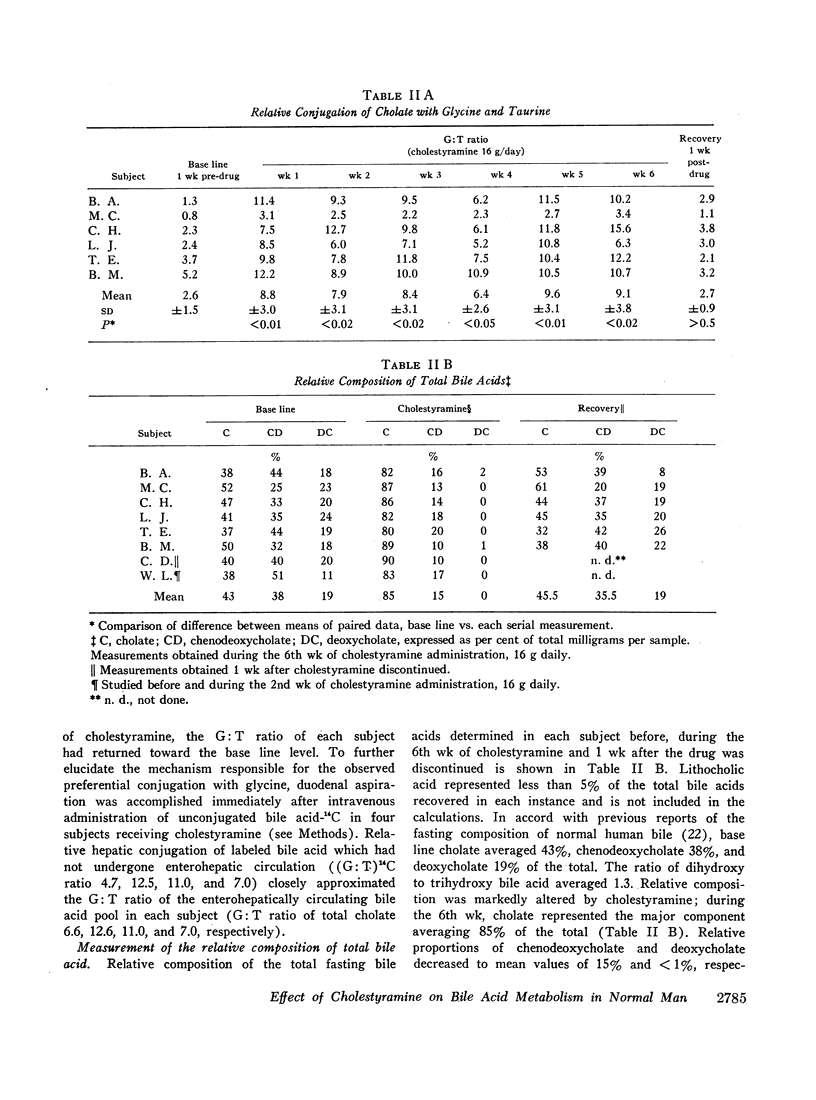
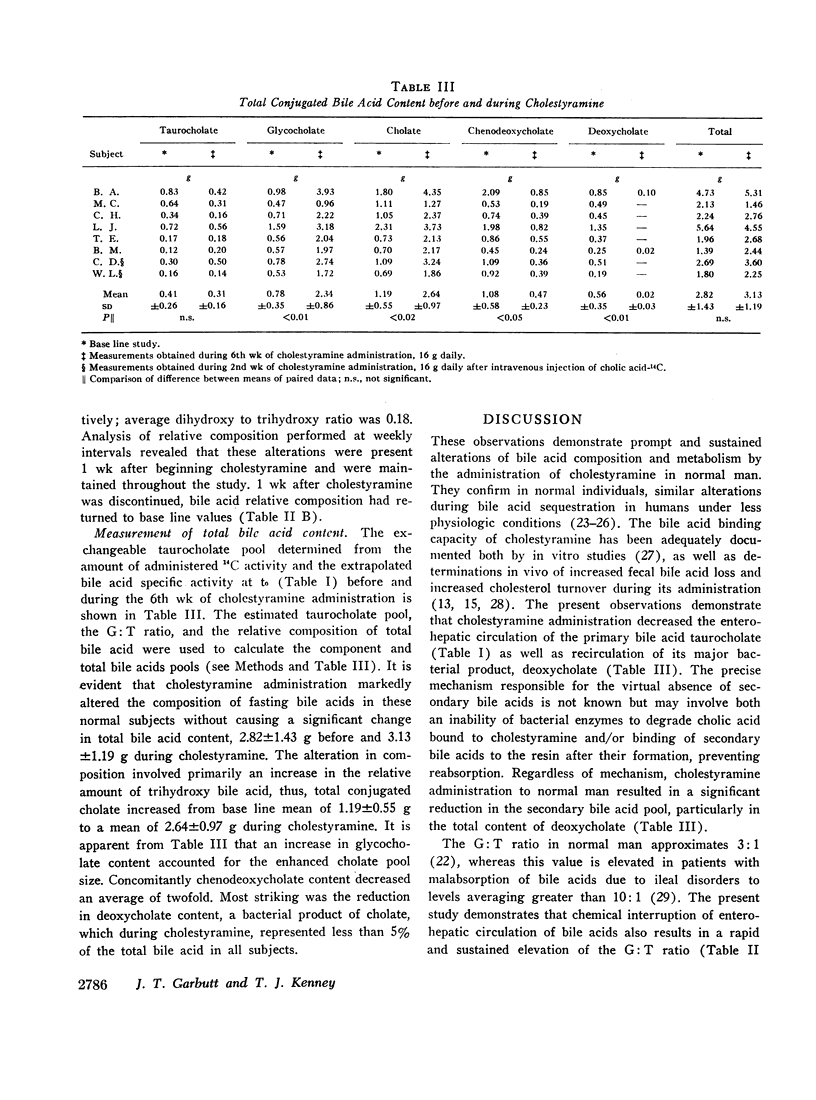
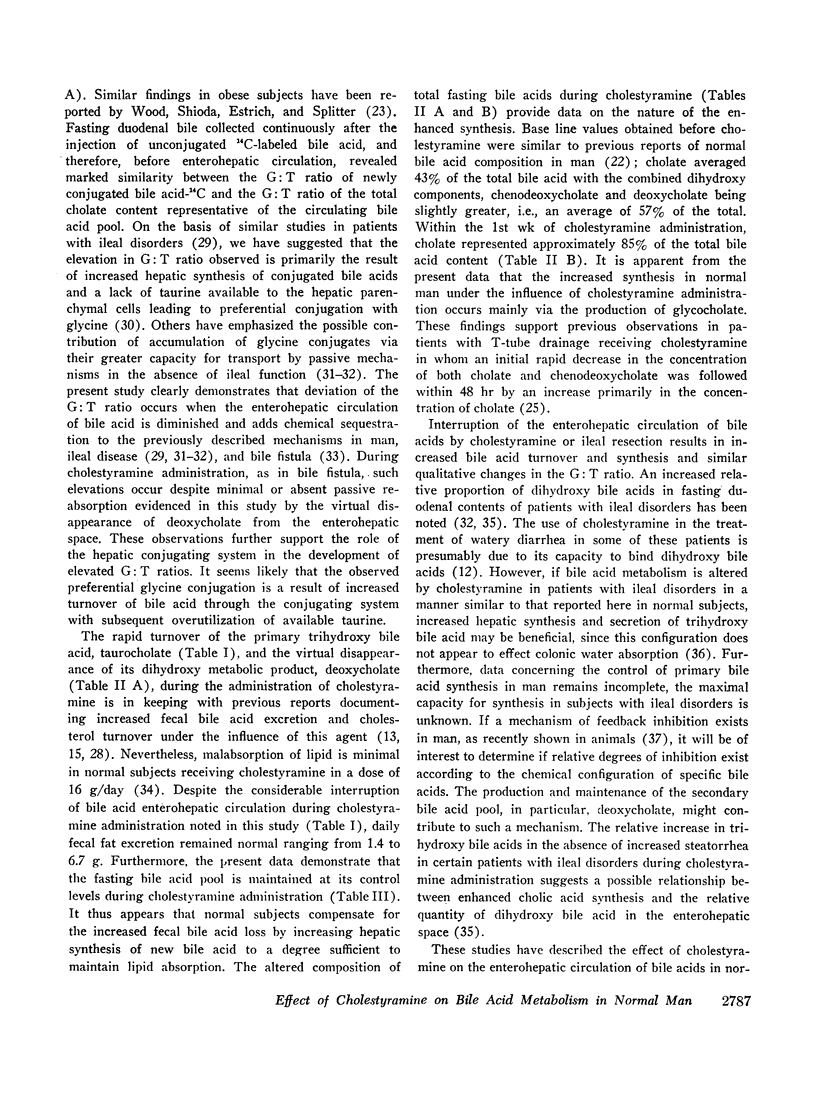
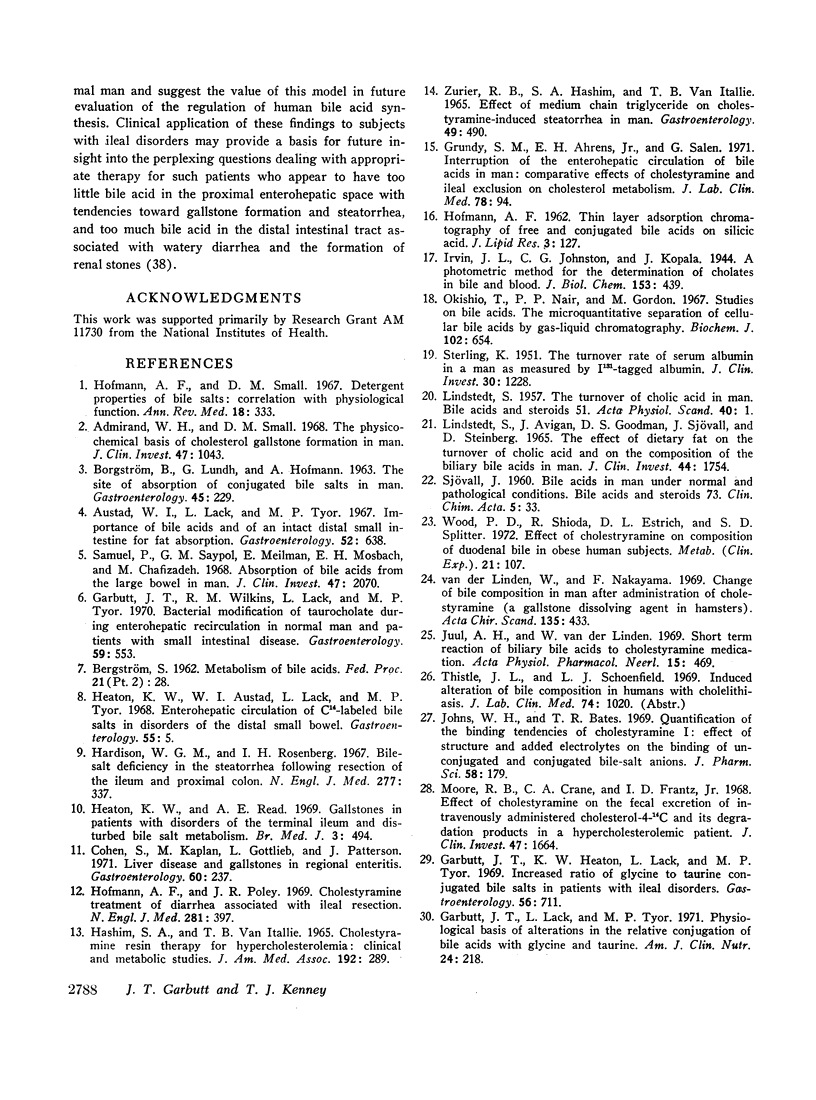
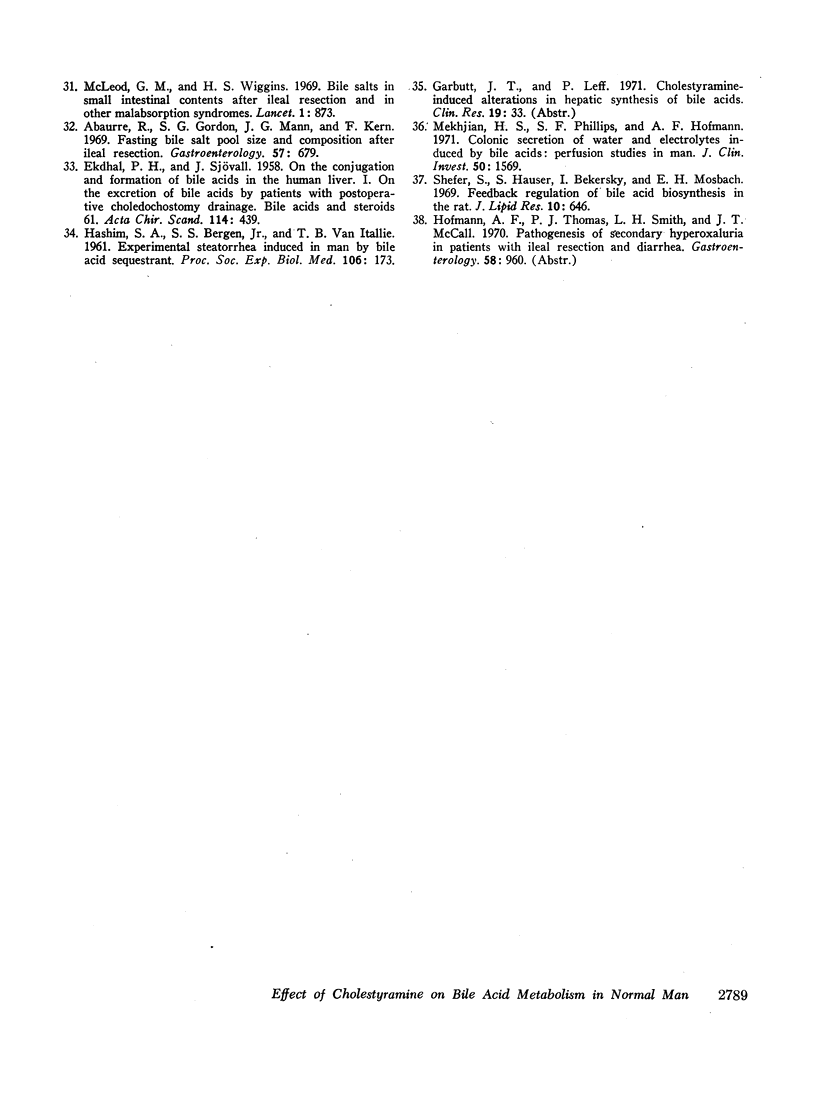
Selected References
These references are in PubMed. This may not be the complete list of references from this article.
- Abaurre R., Gordon S. G., Mann J. G., Kern F., Jr Fasting bile salt pool size and composition after ileal resection. Gastroenterology. 1969 Dec;57(6):679–688. [PubMed] [Google Scholar]
- Admirand W. H., Small D. M. The physicochemical basis of cholesterol gallstone formation in man. J Clin Invest. 1968 May;47(5):1043–1052. doi: 10.1172/JCI105794. [DOI] [PMC free article] [PubMed] [Google Scholar]
- Austad W. I., Lack L., Tyor M. P. Importance of bile acids and of an intact distal small intestine for fat absorption. Gastroenterology. 1967 Apr;52(4):638–646. [PubMed] [Google Scholar]
- BORGSTROEM B., LUNDH G., HOFMANN A. THE SITE OF ABSORPTION OF CONJUGATED BILE SALTS IN MAN. Gastroenterology. 1963 Aug;45:229–238. [PubMed] [Google Scholar]
- Cohen S., Kpplan M., Gottlieb L., Patterson J. Liver disease and gallstones in regional enteritis. Gastroenterology. 1971 Feb;60(2):237–245. [PubMed] [Google Scholar]
- Garbutt J. T., Heaton K. W., Lack L., Tyor M. P. Increased ratio of glycine- to taurine-conjugated bile salts in patients with ileal disorders. Gastroenterology. 1969 Apr;56(4):711–720. [PubMed] [Google Scholar]
- Garbutt J. T., Lack L., Tyor M. P. Physiological basis of alterations in the relative conjugation of bile acids with glycine and taurine. Am J Clin Nutr. 1971 Feb;24(2):218–228. doi: 10.1093/ajcn/24.2.218. [DOI] [PubMed] [Google Scholar]
- Garbutt J. T., Wilkins R. M., Lack L., Tyor M. P. Bacterial modification of taurocholate during enterohepatic recirculation in normal man and patients with small intestinal disease. Gastroenterology. 1970 Oct;59(4):553–566. [PubMed] [Google Scholar]
- Grundy S. M., Ahrens E. H., Jr, Salen G. Interruption of the enterohepatic circulation of bile acids in man: comparative effects of cholestyramine and ileal exclusion on cholesterol metabolism. J Lab Clin Med. 1971 Jul;78(1):94–121. [PubMed] [Google Scholar]
- HASHIM S. A., BERGEN S. S., Jr, VAN ITALLIE T. B. Experimental steatorrhea induced in man by bile acid sequestrant. Proc Soc Exp Biol Med. 1961 Jan;106:173–175. doi: 10.3181/00379727-106-26275. [DOI] [PubMed] [Google Scholar]
- HASHIM S. A., VANITALLIE T. B. CHOLESTYRAMINE RESIN THERAPY FOR HYPERCHOLESTEREMIA: CLINICAL AND METABOLIC STUDIES. JAMA. 1965 Apr 26;192:289–293. doi: 10.1001/jama.1965.03080170017004. [DOI] [PubMed] [Google Scholar]
- Hardison W. G., Rosenberg I. H. Bile-salt deficiency in the steatorrhea following resection of the ileum and proximal colon. N Engl J Med. 1967 Aug 17;277(7):337–342. doi: 10.1056/NEJM196708172770704. [DOI] [PubMed] [Google Scholar]
- Heaton K. W., Austad W. I., Lack L., Tyor M. P. Enterohepatic circulation of C14-labeled bile salts in disorders of the distal small bowel. Gastroenterology. 1968 Jul;55(1):5–16. [PubMed] [Google Scholar]
- Heaton K. W., Read A. E. Gall stones in patients with disorders of the terminal ileum and disturbed bile salt metabolism. Br Med J. 1969 Aug 30;3(5669):494–496. doi: 10.1136/bmj.3.5669.494. [DOI] [PMC free article] [PubMed] [Google Scholar]
- Hofmann A. F., Poley J. R. Cholestyramine treatment of diarrhea associated with ileal resection. N Engl J Med. 1969 Aug 21;281(8):397–402. doi: 10.1056/NEJM196908212810801. [DOI] [PubMed] [Google Scholar]
- Hofmann A. F., Small D. M. Detergent properties of bile salts: correlation with physiological function. Annu Rev Med. 1967;18:333–376. doi: 10.1146/annurev.me.18.020167.002001. [DOI] [PubMed] [Google Scholar]
- Johns W. H., Bates T. R. Quantification of the binding tendencies of cholestyramine. I. Effect of structure and added electrolytes on the binding of unconjugated and conjugated bile-salt anions. J Pharm Sci. 1969 Feb;58(2):179–183. doi: 10.1002/jps.2600580206. [DOI] [PubMed] [Google Scholar]
- Juul A. H., van der Linden W. Short term reaction of biliary bile acids to cholestyramine medication. Acta Physiol Pharmacol Neerl. 1969;15(4):469–479. [PubMed] [Google Scholar]
- LINDSTEDT S. The turnover of cholic acid in man: bile acids and steroids. Acta Physiol Scand. 1957 Sep 17;40(1):1–9. doi: 10.1111/j.1748-1716.1957.tb01473.x. [DOI] [PubMed] [Google Scholar]
- Lindstedt S., Avigan J., Goodman D. S., Sjövall J., Steinberg D. The effect of dietary fat on the turnover of cholic acid and on the composition of the biliary bile acids in man. J Clin Invest. 1965 Nov;44(11):1754–1765. doi: 10.1172/JCI105283. [DOI] [PMC free article] [PubMed] [Google Scholar]
- McLeod G. M., Wiggins H. S. Bile-salts in small intestinal contents after ileal resection and in other malabsorption syndromes. Lancet. 1968 Apr 27;1(7548):873–876. doi: 10.1016/s0140-6736(68)90235-3. [DOI] [PubMed] [Google Scholar]
- Mekjian H. S., Phillips S. F., Hofmann A. F. Colonic secretion of water and electrolytes induced by bile acids: perfusion studies in man. J Clin Invest. 1971 Aug;50(8):1569–1577. doi: 10.1172/JCI106644. [DOI] [PMC free article] [PubMed] [Google Scholar]
- Moore R. B., Crane C. A., Frantz I. D., Jr Effect of cholestyramine on the fecal excretion of intravenously administered cholesterol-4-14C and its degradation products in a hypercholesterolemic patient. J Clin Invest. 1968 Jul;47(7):1664–1671. doi: 10.1172/JCI105857. [DOI] [PMC free article] [PubMed] [Google Scholar]
- Okishio T., Nair P. P., Gordon M. Studies on bile acids: The microquantitative separation of cellular bile acids by gas-liquid chromatography. Biochem J. 1967 Mar;102(3):654–659. doi: 10.1042/bj1020654. [DOI] [PMC free article] [PubMed] [Google Scholar]
- STERLING K. The turnover rate of serum albumin in man as measured by I131-tagged albumin. J Clin Invest. 1951 Nov;30(11):1228–1237. doi: 10.1172/JCI102542. [DOI] [PMC free article] [PubMed] [Google Scholar]
- Samuel P., Saypoi G. M., Meilman E., Mosbach E. H., Chafizadeh M. Absorption of bile acids from the large bowel in man. J Clin Invest. 1968 Sep;47(9):2070–2078. doi: 10.1172/JCI105892. [DOI] [PMC free article] [PubMed] [Google Scholar]
- Shefer S., Hauser S., Bekersky I., Mosbach E. H. Feedback regulation of bile acid biosynthesis in the rat. J Lipid Res. 1969 Nov;10(6):646–655. [PubMed] [Google Scholar]
- Wood P. D., Shioda R., Estrich D. L., Splitter S. D. Effect of cholestyramine on composition of duodenal bile in obese human subjects. Metabolism. 1972 Feb;21(2):107–116. doi: 10.1016/0026-0495(72)90062-5. [DOI] [PubMed] [Google Scholar]
- Zurier R. B., Hashim S. A., Van Itallie T. B. Effect of medium chain triglyceride on cholestyramine-induced steatorrhea in man. Gastroenterology. 1965 Nov;49(5):490–495. [PubMed] [Google Scholar]
- van der Linden W., Nakayama F. Change of bile composition in man after administration of cholestyramine (a gallstone dissolving agent in hamsters). Acta Chir Scand. 1969;135(5):433–438. [PubMed] [Google Scholar]


